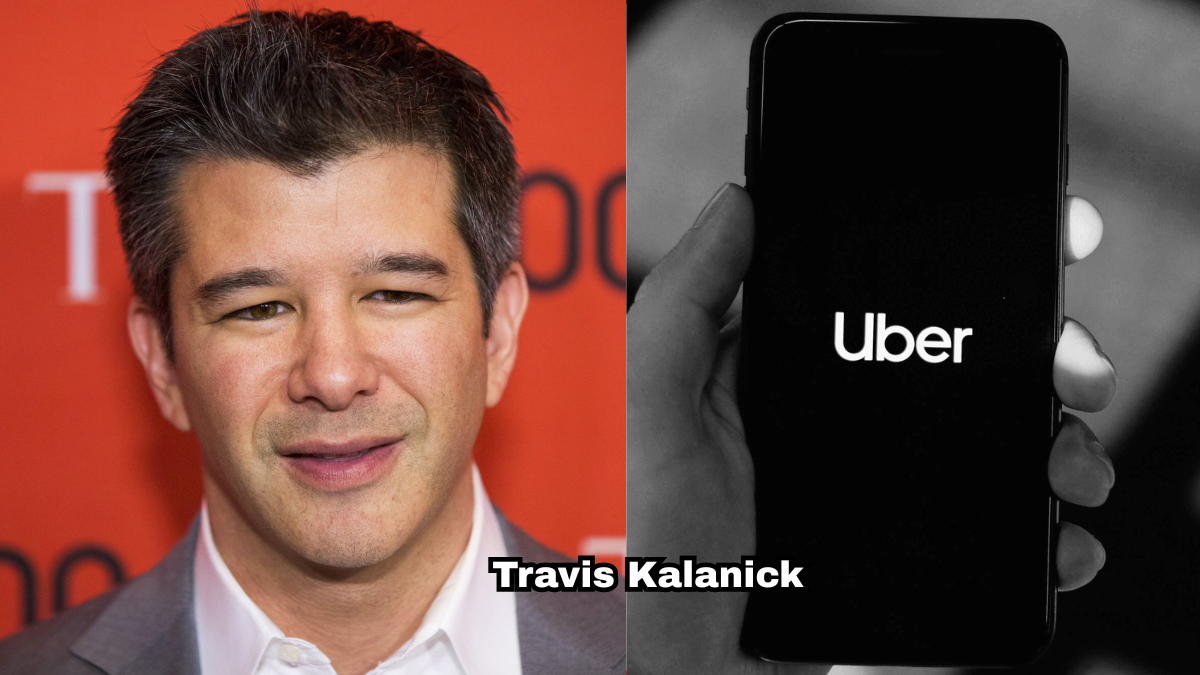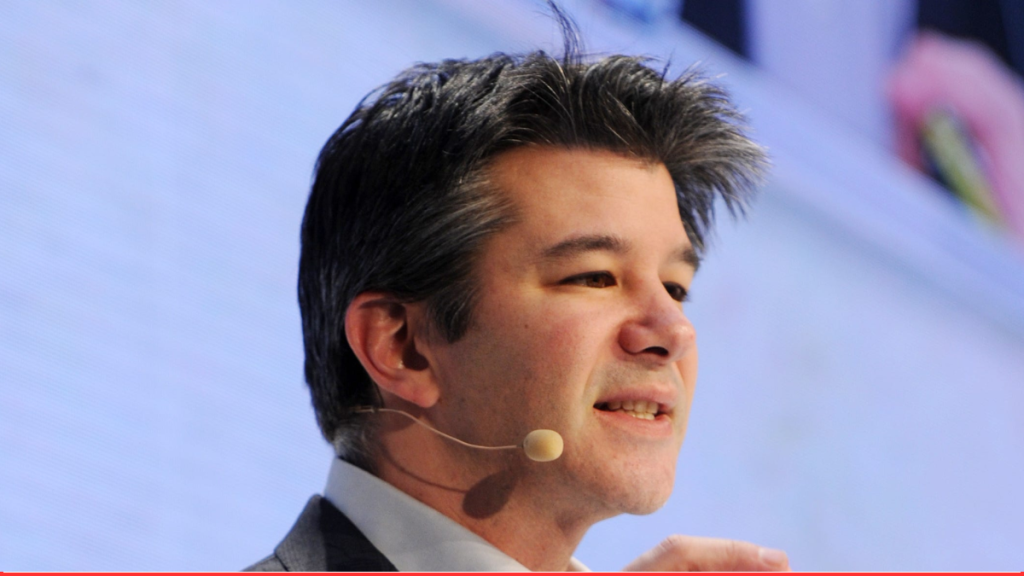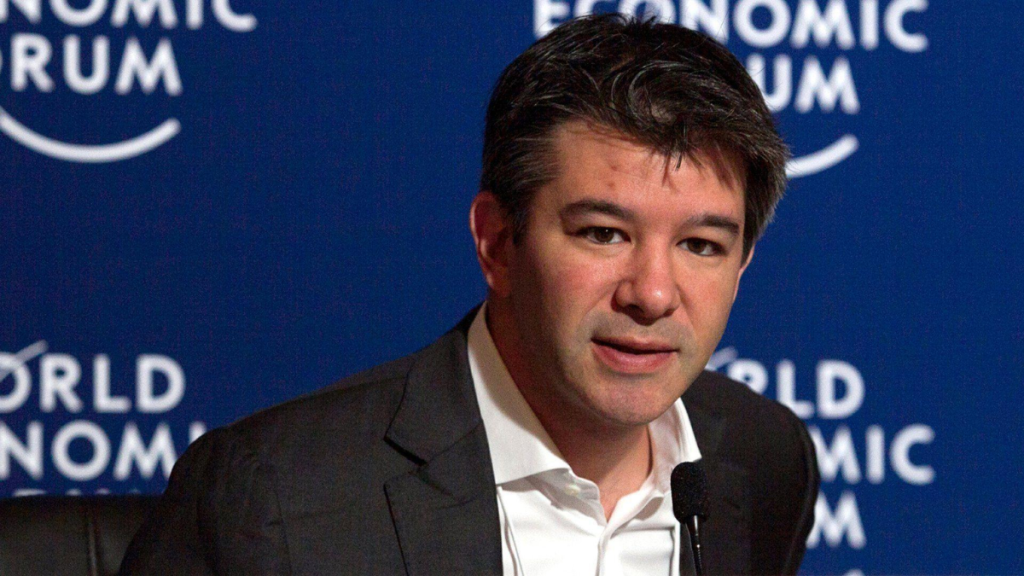
Advertisement
Travis Kalanick is one of Silicon Valley’s most polarizing and influential entrepreneurs. As the co-founder of Uber Technologies, he not only revolutionized the transportation industry but also became a symbol of the disruptive power of tech startups. His journey from a scrappy startup enthusiast to a billionaire tech mogul is a testament to the immense potential of Silicon Valley’s entrepreneurial ecosystem. Kalanick’s rise is characterized by a deep understanding of both technology and business, paired with an audacious vision to change the way the world moves.
Born in 1976 in Los Angeles, Kalanick was introduced to tech from an early age. His first foray into the tech world came with his startup, Scour, a peer-to-peer file-sharing service. While Scour was eventually shut down due to legal disputes, it taught Kalanick invaluable lessons about navigating the tumultuous waters of the tech industry. This early experience proved to be the foundation for what would come next: the creation of Uber.
In 2009, Kalanick joined forces with Garrett Camp to develop a mobile app that would change the way people get around. The app, initially conceived as a way to easily hail a ride, soon became the iconic Uber that we know today. Under Kalanick’s leadership, Uber grew rapidly, expanding to cities across the globe, offering an alternative to traditional taxi services, and transforming the concept of shared economy.
As he once said, “Uber’s mission is to bring transportation to everyone, everywhere.”
Kalanick’s relentless drive and vision turned Uber into a giant, although not without its challenges. His leadership style was often described as aggressive, unyielding, and fiercely competitive, traits that would later become key elements of his legacy.
“If you’re not offending someone, you’re probably not doing something right,” Kalanick famously said.
These qualities helped Uber scale quickly, but they also attracted controversy, sparking debates about leadership ethics, corporate culture, and the treatment of employees.
Despite stepping down as CEO in 2017 after mounting pressure from investors, Kalanick’s departure did little to dampen his entrepreneurial spirit. Instead, he channeled his energy into CloudKitchens, a startup that focuses on providing kitchen spaces for food delivery services. Kalanick’s ability to quickly pivot and rebound after his exit from Uber is a testament to his resilience and business acumen.
Travis Kalanick’s Rise: From Startups to Uber’s Success Story
Travis Kalanick’s entrepreneurial journey began long before Uber made headlines. His first company, Scour, founded in 1998, was a peer-to-peer file-sharing service that gave Kalanick an early taste of both success and failure. Scour’s legal battles with major media companies ultimately led to its downfall, but Kalanick’s experience was invaluable.
As he later reflected, “I learned that failure is not something to be feared; it’s an opportunity to get smarter and stronger.”
After the collapse of Scour, Kalanick went on to co-found Red Swoosh, another tech startup focused on peer-to-peer technology for media sharing. It was here that Kalanick began to hone his skills in scaling businesses.
“In Silicon Valley, the goal is always to create something that can scale. That’s how we think about it,” Kalanick noted.
In 2007, Red Swoosh was acquired by Akamai Technologies, providing Kalanick with a lucrative exit and more experience for his next big venture.
Kalanick’s next move, Uber, was born from a simple but groundbreaking idea: making taxi services more accessible and efficient through a smartphone app. The idea was a game-changer, allowing users to order rides with the touch of a button. Kalanick and co-founder Garrett Camp officially launched Uber in 2009, with Kalanick taking the role of CEO.
Under Kalanick’s leadership, Uber expanded at a rapid pace. By 2015, Uber had become a household name in over 60 countries. The company’s growth was fueled by Kalanick’s ambition, his unapologetic approach to business, and his willingness to take on established industries.
As he once put it, “We are building the transportation platform for the world. This is just the beginning.”
However, Kalanick’s leadership style was controversial. His aggressive tactics, such as his “win at all costs” mentality, led to multiple clashes with competitors, regulators, and even Uber employees. But despite the controversies, Kalanick’s vision for Uber never wavered.
As he famously said, “The goal is to change the world. And if you don’t have a mission like that, then you shouldn’t be here.”
Kalanick’s departure from Uber in 2017 marked the end of an era. Despite stepping down amid mounting pressure from investors and scandals surrounding Uber’s culture, Kalanick left an indelible mark on the company. His rise from a young entrepreneur with big dreams to a billionaire tech mogul remains one of Silicon Valley’s most remarkable success stories.

Networth Breakdown 2025: Assets, Investments, and Business Ventures
As of 2025, Travis Kalanick’s net worth is estimated at around $6 billion, a testament to his ability to amass wealth through innovative ventures. While Kalanick’s largest source of wealth came from his role in creating and scaling Uber, he has diversified his portfolio through various investments and new ventures.
The most notable of Kalanick’s post-Uber ventures is CloudKitchens, a company focused on providing kitchen space for food delivery services. CloudKitchens has quickly become a major player in the rapidly growing ghost kitchen industry. In an interview with Business Insider,
Kalanick explained, “The food delivery market is growing, and there is an unmet need for spaces where food can be prepared and delivered efficiently. CloudKitchens is filling that gap.”
In addition to CloudKitchens, Kalanick has made significant investments in tech startups, including City Storage Systems and Layer. His investments have largely focused on sectors such as logistics, food, and software, which align with his background in tech and business scaling. Kalanick’s diverse investment strategy has paid off, helping to secure his wealth even after stepping away from Uber.
Real estate also plays a significant role in Kalanick’s wealth. He has invested in high-end properties, including a luxurious home in Los Angeles and a sprawling estate in Malibu. “Real estate is a way to diversify and build long-term wealth,” Kalanick has said, reflecting his broader investment strategy.
Despite facing legal and ethical challenges in his earlier career, Kalanick’s ability to innovate and take risks has allowed him to remain relevant in the tech world. He also continues to serve on the boards of various companies, further increasing his influence in the tech industry.
Kalanick’s current wealth can be attributed not only to his ventures but also to his early exit from Uber, which allowed him to retain a substantial stake in the company. His investments and diversified portfolio have positioned him as a savvy investor with a keen eye for emerging industries.

Controversies, Exit from Uber & His Comeback with CloudKitchens
Travis Kalanick’s time at Uber was marked by both groundbreaking success and intense controversy. As Uber’s CEO, Kalanick faced mounting criticism for his aggressive leadership style, which often clashed with employees, competitors, and regulators. Under his guidance, Uber grew rapidly, but its corporate culture became a subject of public scrutiny.
In 2017, a video surfaced showing Kalanick berating an Uber driver over fare reductions. The incident, combined with other reports of harassment and misconduct within Uber, led to increasing pressure from investors to oust him. Kalanick’s resignation was inevitable, but it marked a turning point in his career.
“I came to realize that the board and the investors had lost confidence in me,” Kalanick reflected in a statement. “Uber will continue to grow, but it’s time for me to step aside.”
Following his exit from Uber, Kalanick shifted his focus to CloudKitchens, a new venture aimed at creating efficient kitchen spaces for delivery-only restaurants. Despite the challenges of stepping away from Uber, Kalanick managed to quickly rebound.
“When one door closes, another one opens,” Kalanick said of his transition to CloudKitchens.
CloudKitchens, which offers kitchen space to companies in the booming food delivery industry, has garnered significant attention, and Kalanick’s success with the venture has helped restore his reputation as a formidable entrepreneur. His comeback story serves as a testament to his resilience and determination to succeed.
“In business, you have to learn how to deal with failure, bounce back, and move on,” Kalanick noted.
Today, Kalanick’s career serves as a case study in the complexities of success and failure in the tech world. Despite controversies, his ability to reinvent himself and his investments in emerging markets have solidified his place in Silicon Valley history.
Travis Kalanick’s journey from a tech entrepreneur with modest beginnings to a billionaire investor and co-founder of one of the most revolutionary companies in modern history, Uber, is nothing short of extraordinary. His rise embodies the essence of Silicon Valley’s startup culture—an environment that thrives on audacity, disruption, and the ability to pivot when faced with adversity. Kalanick’s entrepreneurial journey is characterized by innovation, risk-taking, and resilience, but it also reveals the complexities and consequences of success in the fast-paced tech world.
Uber’s meteoric rise under Kalanick’s leadership not only transformed the global transportation industry but also reshaped the very concept of the gig economy. The company’s massive valuation, its widespread adoption by millions of people worldwide, and its ability to challenge and disrupt traditional industries are a direct result of Kalanick’s vision and leadership. “Uber’s mission is to make transportation as reliable as running water, everywhere for everyone,” Kalanick said, encapsulating his mission to make urban transportation accessible to all.
However, Kalanick’s legacy is also intertwined with controversy. His aggressive leadership style, though effective in driving Uber’s growth, resulted in clashes with employees, regulators, and competitors. The controversies surrounding Uber’s corporate culture, the company’s often contentious relationship with local governments, and Kalanick’s own personal actions led to his resignation in 2017. The fallout was significant, and Kalanick was forced to leave the company he had helped build. “Sometimes the best way forward is to step aside,” Kalanick acknowledged in his resignation statement, signaling a moment of reflection in an otherwise relentless career.
Yet, Kalanick’s story did not end with his exit from Uber. Instead, it marked a new chapter in his entrepreneurial journey, demonstrating his ability to rebound and redefine his place in the tech world. His venture into CloudKitchens and other investments in the food delivery sector, real estate, and various tech startups showcases his ability to adapt and thrive in new industries. “The best entrepreneurs are the ones who don’t give up after failure, but instead take their experiences and apply them to new challenges,” Kalanick said, underscoring his commitment to innovation.
As of 2025, Kalanick’s net worth stands at a staggering $6 billion, a reflection of his ability to continue building wealth even after stepping away from the company that made him famous. His investments in tech startups, food delivery services, and real estate have positioned him as a savvy investor with an eye for growth sectors. Kalanick’s diversified portfolio ensures that his wealth will continue to grow, and his influence will remain prominent in the tech world for years to come.
Ultimately, Kalanick’s journey serves as a powerful reminder of the dual nature of success in the tech industry. It’s a world that rewards innovation, vision, and the courage to take risks, but it also demands an understanding of how to navigate the inevitable controversies and challenges that come with rapid growth. Travis Kalanick’s legacy will likely remain a subject of debate—his aggressive leadership style, his impact on Uber, and his ability to reinvent himself post-Uber—but there’s no denying that he has left an indelible mark on the tech world. His story is a testament to the fact that, in Silicon Valley, success is never linear, and the path to greatness is paved with both triumphs and setbacks.
